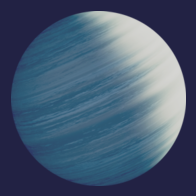Space.com article reported, "The whole reason these exomoons showed up in the transit method is that they are huge mini-Neptune-size bodies that could have diameters between 1.6 times to 4 times that of Earth. If they're there, they're huge. Kipping thinks that's part of what could make them just too unusual to be widely accepted as the first exomoon discoveries. "I think there is a lot of suspicion about Kepler-1625 b I and Kepler-1708 b I because they're both weird. They're both like these mini-Neptune size moons, right? And everyone is asking, 'Who ordered that? How does the universe make such bizarre stuff?'" he said. "And then this controversy doesn't help at all. They're too damaged now."
I do not see them listed now at the exoplanet sites I use.
This encyclopaedia provides the latest detections and data announced by professional astronomers on exoplanetary systems. It contains objects lighter than 60 masses of Jupiter, which orbit stars or are free-floating. It also provides a database on exoplanets in binary systems, a database on...

exoplanet.eu

exoplanetarchive.ipac.caltech.edu
Perhaps an old fashioned sword duel is needed here to settle the debate

Tycho Brahe style



